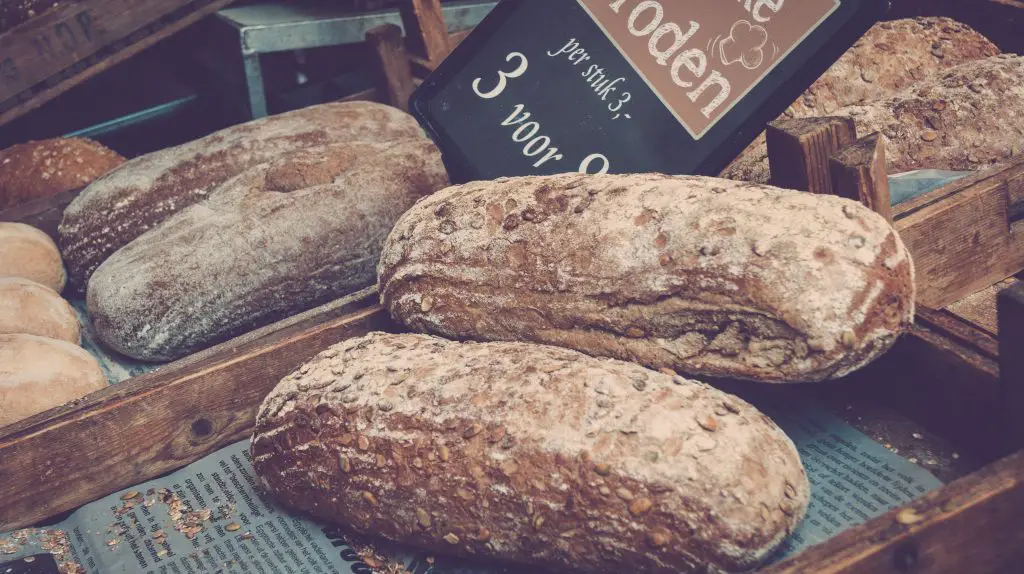If you are tired of baking underproofed loaves, then you’re at right place. In this post we’ll check how to recognize early signs of underproofed sourdough bread and how to avoid them.
Under-proofed Whole Wheat Bread
I believe we all have been there at least once in our baking bread adventures.
You know:
– tight and moist crumb,
– (shiny) pale crust,
– sour and undeveloped taste,
– no oven spring,
a.k.a underproofed sourdough bread a.k.a brick.
What does underproofed mean?
It means that the yeast hasn’t produced enough carbon dioxide and the gluten hasn’t been developed enough to carry the bubbles of carbon dioxide and to enable expansion.

The general advice to tell if your bread is perfectly fermented would be to use all of your senses – how the dough looks, smells, feels and tastes.
Related Read: Overproofed Sourdough
What at the three crucial parts/phases in sourdough baking we should pay attention to?
1. Sourdough starter:
Make your starter work before mixing it into the dough.
I might mentioned this many times, I know. I repeat it so often, because it is really important, especially when building a sourdough starter from scratch. Depending on the flours used and the environmental temperature, your starter can need three or more days to become fully mature.
Observe your starter – it is ready to be mixed into the dough, when it rises after each feeding/refreshment.
Related Read: Reasons Why Sourdough Starter Smells + Ways to Fix It
Inactive starter will not rise your bread and as a result you might end up with underproofed loaf.
2. First rise (bulk fermentation):
Make the dough alive and light.
If your usual baking routine involves three steps of fermentation (first rise, intemediate proofing between dividing and shaping the dough, final proofing) , then it’s important to observe dough’s development in the first rise (bulk fermentation or pointage in French).

First rise of bulk fermentation is a period after the dough has been mixed and before it has been shaped.
In bulk fermentation we aim to develop dough’s strength, structure and its maturity. The dough should feel alive, strong, airy, spongy and light and the surface doesn’t feel sticky (see the photo below).
One of the most important factors in efficient bulk fermentation is the temperature (both of environment and ingredients). The warmer the environment, the faster the development of the dough will be.
If the dough doesn’t build strength in the first rise, you will have trouble shaping the bread and the bread will have poor oven spring, which again, will results in underfermented bread.
3.Final Rise
Check how developed your dough is and if it is ready to be put in the oven.
Remember whrn I mentioned how the fermentation is basically a judgement call? Well, it applies to the final rise as well.
The most crucial thing in the final rise is to determine when the dough is ready to be put in the oven i.e. to stop the dough from collapsing into itself as the gluten strands don’t have ability to hold all the bubbles of carbon dioxide. I’ve learned from my experience and practice that the poking test is in most cases the most efficient way to tell if the dough is fully fermented.
In poking test, we examine the dough resistance and elasticity by pressing into the dough and observing the reaction (see the photo below).
– underfermented bread: the indent fills up quickly (the gluten strands are strong, but somehow not elastic enough to allow the expansion of the dough)
– overfermented bread: the indent stays as it is (gluten strands have weakened)
– perfectly fermented: the indent comes back half way through (gluten strands are strong and elastic, meaning the expansion of the dough can be expected)
In the beginning, it might be difficult to tell what is the right reaction, but you’ll become fully skilled by practising poking test many times.
Caution: do not apply poking test just after shaping, it will give you the wrong impression. Thus, make sure your dough rises in volume as well before you apply the test.
If you baked bread has not been fermented long enough, you’ll be able to see this by just looking the crust (see the photo below). Underfermented dough will result in pale crust. Pale crust means that no caramelization of sugars occured. Pale crust can often occur in overfermented doughs, as the yeast eats up all the sugars and no browning of the crust happens.
If your managed to determine the perfect timing for the bread to be baked, but your crust is still pale, check out other factors as well (added salt, oven temperature, steam, etc.).
And what to do if we underproofed bread still happens? Well, you can always make some croutons and use them in the soup, like in this recipe.
Any thoughts or questions about this topic? Let me know by leaving a comment below.
This post is the third part of the background series, where I reveal tips, tricks, and secrets of successful sourdough baking. Check Part 1 and Part 2 here:
Part 1: Six biggest challenges in sourdough baking and how to overcome them
Part 2: 7 essential keys for successful sourdough baking





![Autolyse Bread: Mixing Flour The Right Way [Simple Guide] 7 Autolyse bread: mixing flour the right way [simple guide]](https://www.mydailysourdoughbread.com/wp-content/uploads/2022/09/CD-blog-images-2022-09-28T221858.458-120x120.jpg)
